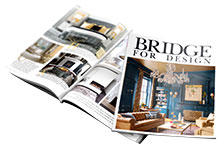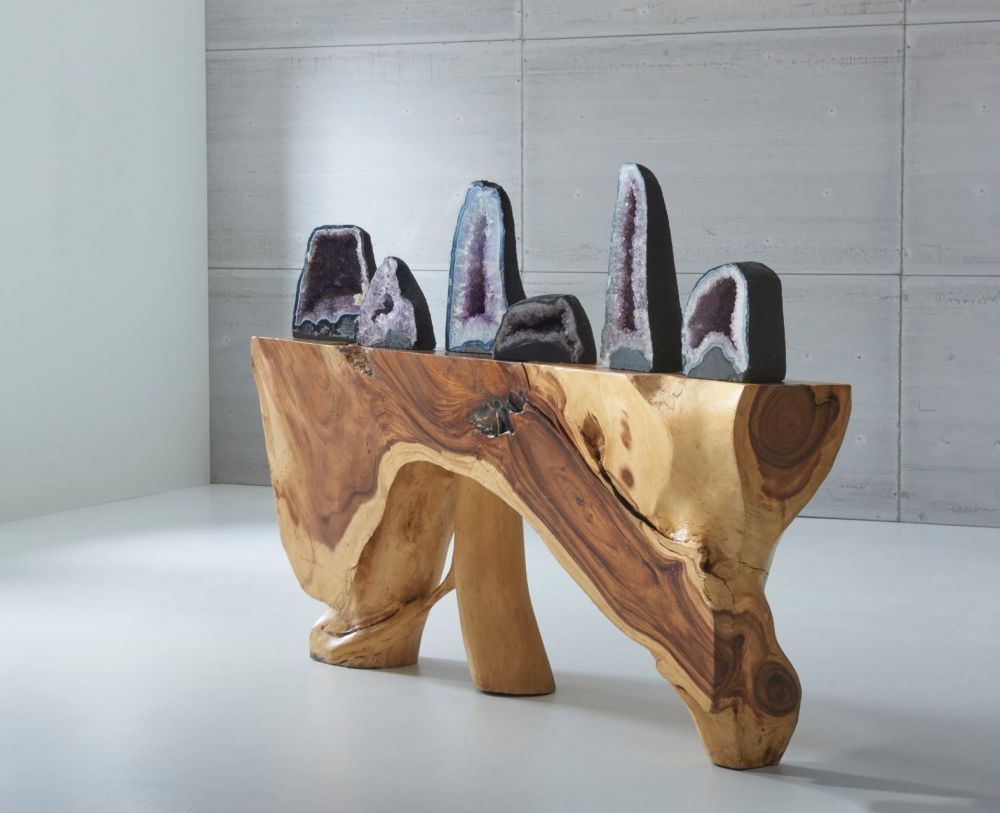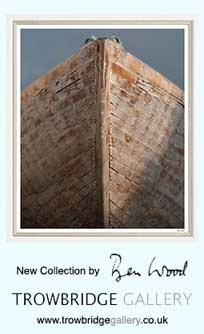Technology and social media has allowed micro-trends to turn into global trends, but what I’ve noticed in the high-end market is not a shift towards sameness, but a boldness to find one’s own style and stay true to that.
With this in mind, here at Phillips Collection, we have been focusing our attention on how to enhance natural materials like wood and stone. What happens to the personality of a solid wood table when you stain it and give a glossy finish versus leaving it in the raw? This is both a stylistic and durability study. What we’ve found is that every layer of finish makes the design more niche, and that’s okay. In fact, it’s exploitable.
Grey Stone is a raw wood which is treated with special minerals to bring out texture in the grain. This also desaturates the yellow in the wood, allowing a penetrating, grey stain to be applied that has a cooler colour temperature. With our tables, we go in with our low sheen lacquer and the result is a wooden table full of texture that appears to have turned to stone. Grey works in so many environments that it creates a universal appeal despite being such a boldly specific finish.
Burnt wood was a micro trend that has popped up in interiors around the world. Taking a product and literally charring it with a blowtorch does a few things to the wood. First, it brings out a deep texture in the grain as well as creating beautiful cracks and fissures in the surface. Second, it creates a uniform, matte colourway, hiding the superficial grain but still communicating wood by the texture it creates. Lastly, the decision to keep it matte makes it feel almost primitive. From our backgrounds in antiquities we have found that even the most rustic, heirloom pieces can find their way into super contemporary spaces by creating just the right boldness in contrast. That is where charred, matte black fi nishes play such an exciting role in 21st
Century interior design.
Bleached is not just for the beach anymore. You’ll be seeing more and more bleached and white washed finishes making their way inland and into urban spaces. They communicate age and a certain timelessness which homeowners gravitate towards. ‘Heirloom’ no longer means a piece handed down generation after generation. It is more a feeling a product can evoke that gives you a sense of nostalgia. We see bleached as the new pastel.
Whether with a hint of red or a deep espresso, brown has always been a popular finish and we are always looking for the right depth of finish so the grain is celebrated, not washed over. At Phillips Collection, we struggled for years to find the right brown, and it was only during a recent, unfortunate fire in one of our kilns that we discovered the perfect brown. In an attempt to salvage a large dining slab, we scraped off the charred top layers to reveal the unharmed core. We sealed, stained and finished the piece and realised we created a stunning finish.
There is so much opportunity to bring innovation to the marketplace, and the audience is out there for any and every style. What has sustained throughout the last decade is a desire for an authentic product. Solid woods, finishes that celebrate the raw material, and a touch of surprise. It’s a wonderful and exciting time to be in the business of creating home furnishings.





